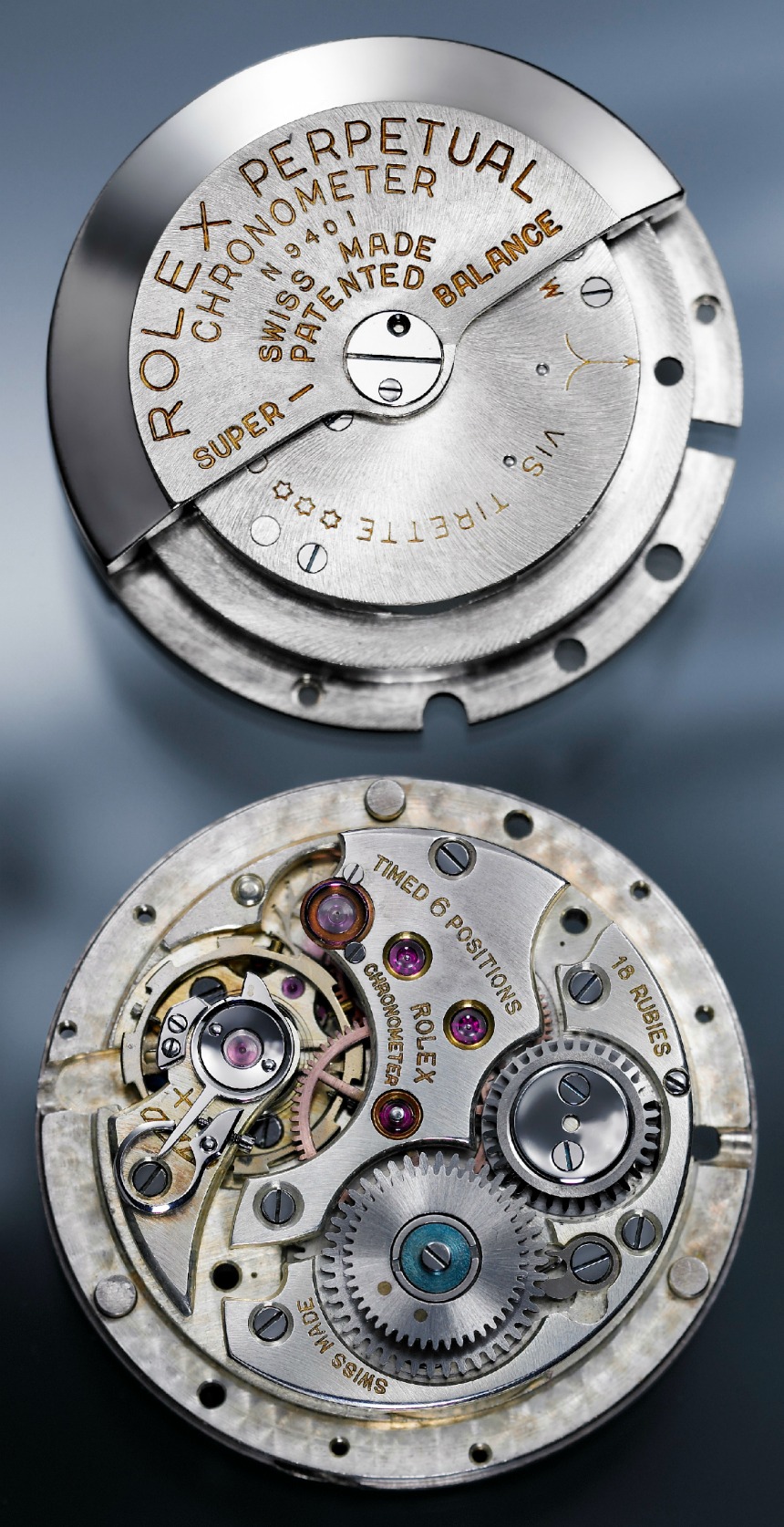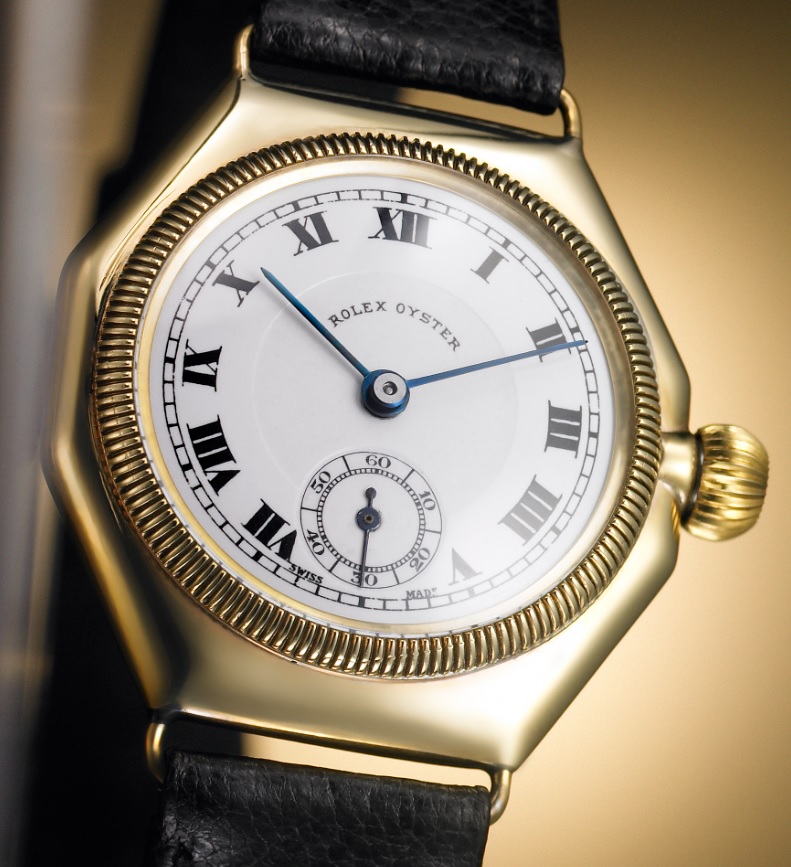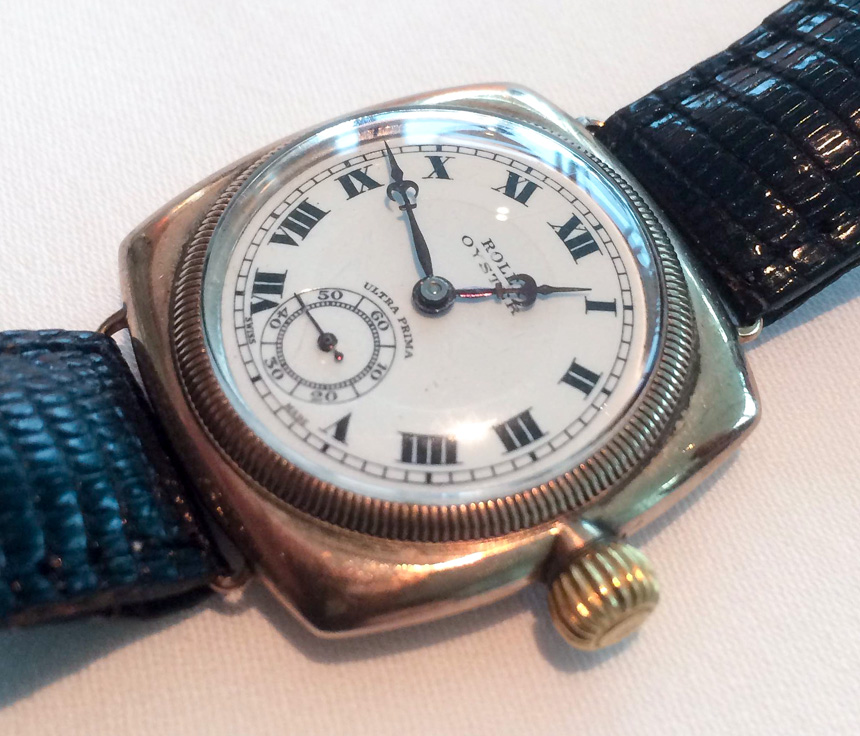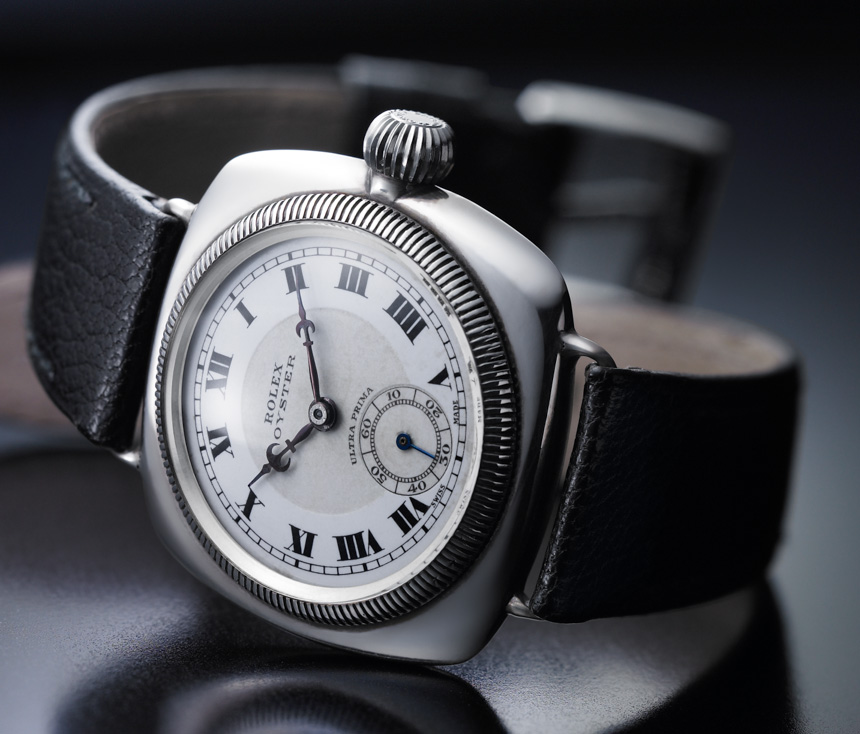
 A further development that helped increase the safety of the movements was in the later Rolex Oyster Perpetual watch. In 1931 Rolex developed a module to fit over their movements that offered automatic winding, and thus the “Oyster Perpetual” was born. This new term joined Rolex Oyster and today is on the dial of all Rolex watches. This is good to know in case you’ve ever wondered why “Oyster Perpetual” is on the dial of every Rolex watch sold these days. Automatic winding was a benefit to water resistance and other durability matters because the wearer did not have to unscrew the crown and wind the watch manually, thus opening up a small area of the case. The Perpetual rotor (as it was called) allowed the watch to be wound merely by wearing it.
A further development that helped increase the safety of the movements was in the later Rolex Oyster Perpetual watch. In 1931 Rolex developed a module to fit over their movements that offered automatic winding, and thus the “Oyster Perpetual” was born. This new term joined Rolex Oyster and today is on the dial of all Rolex watches. This is good to know in case you’ve ever wondered why “Oyster Perpetual” is on the dial of every Rolex watch sold these days. Automatic winding was a benefit to water resistance and other durability matters because the wearer did not have to unscrew the crown and wind the watch manually, thus opening up a small area of the case. The Perpetual rotor (as it was called) allowed the watch to be wound merely by wearing it.  It is also worth mentioning an extra added item of watch history that is related to the cushion-shaped case of the original Rolex Oyster. Does it look familiar? Rolex went on to increase the size of the case and develop a diving watch for Italian instrument company Panerai. The now iconic Panerai case was actually a Rolex creation. If you put a modern Panerai next to this small (under 30mm wide) Rolex Oyster you will see exactly where its design DNA came from. While so much of what Rolex is today evolved in the first few years of the brand, the traditionally-styled dials and cases of the first Rolex Oyster watches are a thing of the past. They are rather typical of watches from that era. In fact, the wristwatch as a popular consumer good wasn’t even really a decade old at that time. aBlogtoWatch included the Rolex Oyster in its list of the best Great Gatsby-era watches here. What Hans Wilsdorf understood from a very early point in the industry is what consumers wanted, as well as needed. It is interesting to see these first Rolex Oyster watches and see not only how far we’ve come, but how much of Rolex’s heritage really began from that start. rolex.com
It is also worth mentioning an extra added item of watch history that is related to the cushion-shaped case of the original Rolex Oyster. Does it look familiar? Rolex went on to increase the size of the case and develop a diving watch for Italian instrument company Panerai. The now iconic Panerai case was actually a Rolex creation. If you put a modern Panerai next to this small (under 30mm wide) Rolex Oyster you will see exactly where its design DNA came from. While so much of what Rolex is today evolved in the first few years of the brand, the traditionally-styled dials and cases of the first Rolex Oyster watches are a thing of the past. They are rather typical of watches from that era. In fact, the wristwatch as a popular consumer good wasn’t even really a decade old at that time. aBlogtoWatch included the Rolex Oyster in its list of the best Great Gatsby-era watches here. What Hans Wilsdorf understood from a very early point in the industry is what consumers wanted, as well as needed. It is interesting to see these first Rolex Oyster watches and see not only how far we’ve come, but how much of Rolex’s heritage really began from that start. rolex.com
Advertising Message

